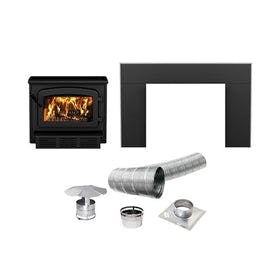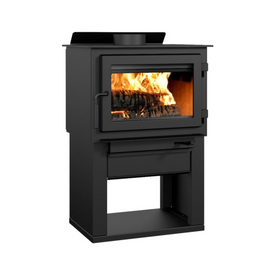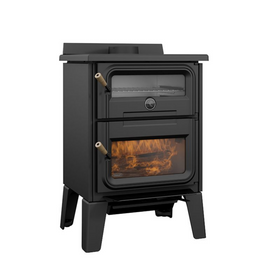
What Is the Most Efficient Way to Burn Wood?
Last Updated: Apr 7, 2025There is nothing more romantic than the orange-red embers of a fire slowly burning in the fireplace during a cold winter night. The warmth of a fireplace brings a rich, natural heat that only comes from burning firewood. Most homes built today have replaced the natural log fireplace with gas fireplaces. Gas fireplaces are often much less efficient and run the potential risk of filtering carbon monoxide into your home, especially if you opt for a ventless fireplace.
Does your home have a fireplace and a chimney, or are you thinking about installing a small wood-burning stove or fireplace into your home? Some tricks of the trade will allow you to maximize the heat that comes from burning wood. Learning the agrarian art of properly cutting, storing, and burning wood is a great way to sustainably heat a home or add a bit of extra warmth without having to turn up the thermostat.
Table of Contents
- Get the Right Wood
- What Is the Best Firewood for Heat?
- How to Stack Firewood Wood
- What is a Cord of Firewood?
- How Much Is a Cord of Firewood?
- How To Start a Fire Safely
- Ideas for Efficient Burning
- What Are Some Alternatives to Fireplaces?

Get the Right Wood
The chances are that your grandparents could walk through the woods and tell you which trees were suitable for burning and which were practically useless. To the modern-day urban person, a tree is a tree. Over time, many of us have lost contact with the natural world and have "outsourced" our needs. This outsourcing has led to the loss of a wide variety of agricultural and outdoor skills and knowledge that used to be a necessity for survival.

What Is the Best Firewood for Heat?
When it comes to wood for burning, the white pine or spruce tree in your backyard that blew over during a windy storm won't offer you near the same amount of heat value as beach, oak, or ash trees. BTUs are the unit of measure for heat produced by different types of firewood. Eastern hardwood trees, such as Osage orange, shagbark hickory, and black locust, have some of the highest BTU values of any variety of wood. This attribute means that they will burn longer and hotter and vastly increase the amount of heat in your home.
You can research the BTU values of several types of popular tree species here.

What is a Cord of Firewood?
When purchasing firewood, you generally buy it by the "cord" or fraction of a cord. This commonly accepted unit of measure is equal to 128 stacked cubic feet. This volume corresponds to a neatly piled stack of wood that measures four feet high by four feet deep by eight feet long. Another well-known measure, the "face cord," is a neatly piled stack of wood measuring four feet high by eight feet long by 16 inches deep.
How Much Is a Cord of Firewood?
If you purchase firewood in large quantities, you can expect to pay between $120-$180 per year per cord.

Ideas for Efficient Burning
While fireplaces certainly have a romantic feel to them, most fireplaces are incredibly inefficient. The only way to truly feel the heat is by getting close enough to the fire where you can feel the burn. Most of the actual heat escapes up through the chimney. However, the shallow box design reflects much more heat into the home. The Rumford Fireplace is one of the oldest fireplace models, designed back in the 1790s. It is still considered one of the most efficient fireplace models on the market today.
What Are Some Alternatives to Fireplaces?
If your home does not have a fireplace, it can be expensive to install one. Costs add up, given that you'll have to add a chimney and take proper safety precautions, as well. Instead, consider opting for an energy-efficient wood stove or even the traditional potbelly cast iron stove (that you can probably find at an antique store). These will most likely offer much more heat than a fireplace. For homesteaders and people who live for DIY projects, a rocket mass heater is one of the most efficient ways to heat a home. As a bonus, you can even incorporate an earthen bench that will warm your bottom while you sit and read a book during those cold winter nights.
Tobias Roberts
Tobias runs an agroecology farm and a natural building collective in the mountains of El Salvador. He specializes in earthen construction methods and uses permaculture design methods to integrate structures into the sustainability of the landscape.













